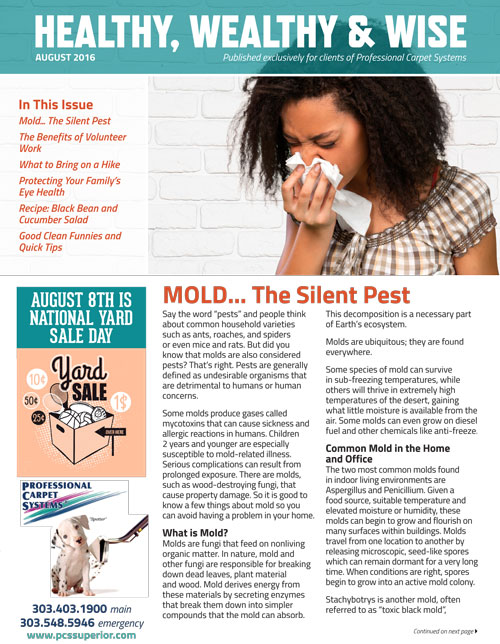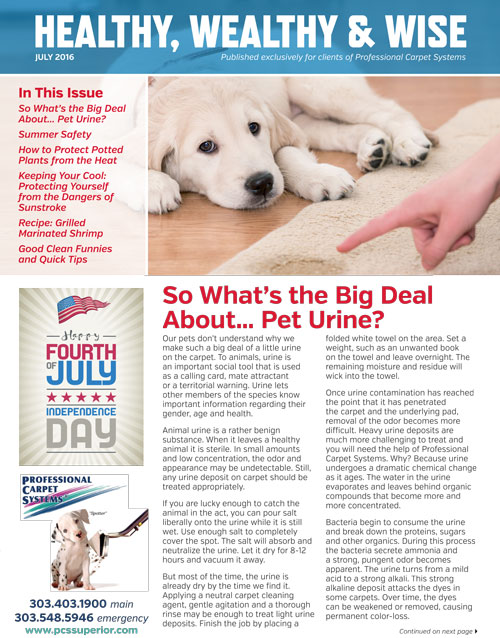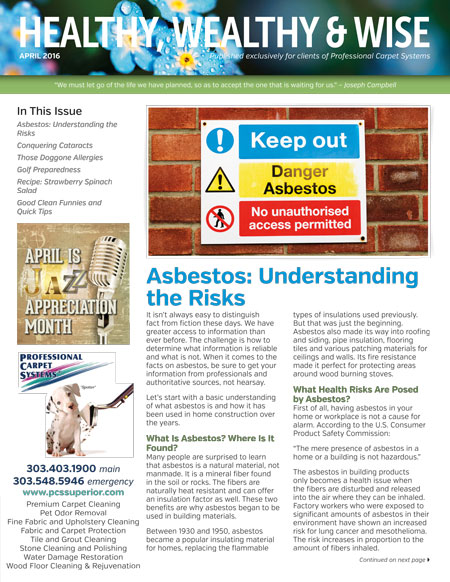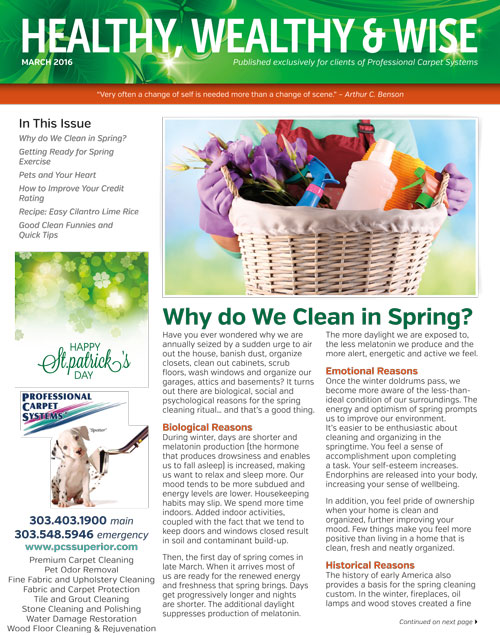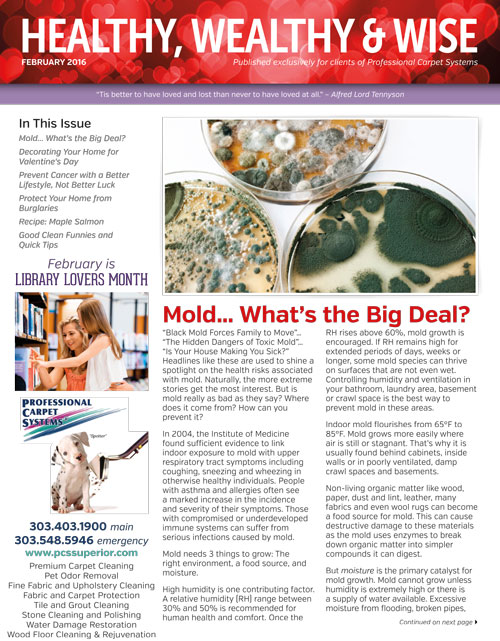Here’s our November 2016 client newsletter.

It’s only new once
Remember when your carpet was brand new? You vowed you would take your shoes off when you came into the house and vacuum twice a week. No eating in the living room! If anything spilled, you cleaned it up immediately. While these are great promises to make to yourself, even the best kept carpet needs to be cleaned regularly. And, if you are willing to admit that you have perhaps slacked off on these promises, your carpet might need to be cleaned more than you realize. In addition, there are other things you can do to keep your carpets looking great. Your Carpet can “Look” New Again Many people get their carpets cleaned and suddenly they see their carpet through new eyes, saying, “My carpets look like new!” It’s true, cleaning your carpets can make them look so much better that it almost feels like you have new carpet all over again. But, like everything else, carpet ages. Color is usually the most important factor in how a carpet looks. As long as the color looks vibrant and there are no major spots or stains, most of us are quite happy with the look of our carpet.
But why does the color start to look tired after a few years even after our best efforts at cleaning? Why can’t we make it look new again? Isn’t that dull, lifeless appearance in the traffic areas just dirt? No doubt, dirt is a contributing factor, but there are three other factors that cause carpet to look old: abrasion, crushing and pile distortion. Abrasion – Dirt is loose particulate soil tracked in from outside, including mud, pollution, pollen and gritty minerals that scratch and dull the surface of carpet fibers. This abrasion changes the way light reflects off of the scratched fibers so colors are muted. We call this permanent condition loss of luster. This is the primary reason that colors lose their vibrancy. Imagine a car that is scratched with sandpaper. No amount of cleaning can bring back the luster. Pile crush – Areas that are subject to a lot of foot traffic will crush down and lose some pile height. The carpet loses its soft, fluffy appearance and feel. How severely depends on the fiber type, yarn density, pile depth and quality of carpet pad.
Pile distortion – When pile yarns lose their twist or the yarns are aligned in different directions, high traffic areas can appear dull and dingy. Once the carpet pile has become distorted it cannot be corrected. Some carpets are more prone to this type of appearance change than others. Keeping Your Carpets Looking New Longer Here are a few tips you can use to keep your carpet looking newer longer: • Keep soils out of the home as much as possible. Use doormats at all entrances and take off your shoes when coming in from outside. • Regular vacuuming is the best thing you can do to reduce damage caused by gritty dirt.
• In areas where there is a lot of traffic, you can reduce wear by rearranging furnishings to redirect traffic. • Use carpet runners to limit crushing and pile distortion. • Regular cleaning before your carpet looks dirty is an important line of defense. Once soils have built up to the point of being obvious the damage is already done. • Applying a professional carpet protector after every cleaning is another great way to assure your carpet stays beautiful longer. Remember, carpet is only new once but with care you can keep it looking good for years to come.


